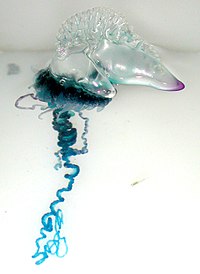
Photo from wikipedia
ABSTRACT Introduction Lung cancer remains the deadliest form of cancer in the world. Screening through low-dose CT scans has shown improved detection of pulmonary nodules; however, with the introduction of… Click to show full abstract
ABSTRACT Introduction Lung cancer remains the deadliest form of cancer in the world. Screening through low-dose CT scans has shown improved detection of pulmonary nodules; however, with the introduction of robotic bronchoscopy, accessing and biopsying peripheral pulmonary nodules from the airway has expanded. Improved diagnostic yield through enhanced navigation has made robotic bronchoscopy an ideal diagnostic technology for many proceduralists. Studies have demonstrated that robotic bronchoscopes can reach further with improved maneuverability into the distal airways compared to conventional bronchoscopes. Areas covered This review paper highlights the literature on the technological advancements associated with robotic bronchoscopy and the future directions the field of interventional pulmonary may utilize this modality for in the treatment of lung cancer. Referenced articles were included at the discretion of the authors after a database search of the particular technology discussed. Expert opinion As the localization of target lesions continues to improve, robotic platforms that provide reach, stability, and accuracy paves the way for future research in endoluminal treatment for lung cancer. Future studies with intratumoral injection of chemotherapy and immunotherapy and ablation modalities are likely to come in the coming years.
Journal Title: Expert Review of Respiratory Medicine
Year Published: 2023
Link to full text (if available)
Share on Social Media: Sign Up to like & get
recommendations!